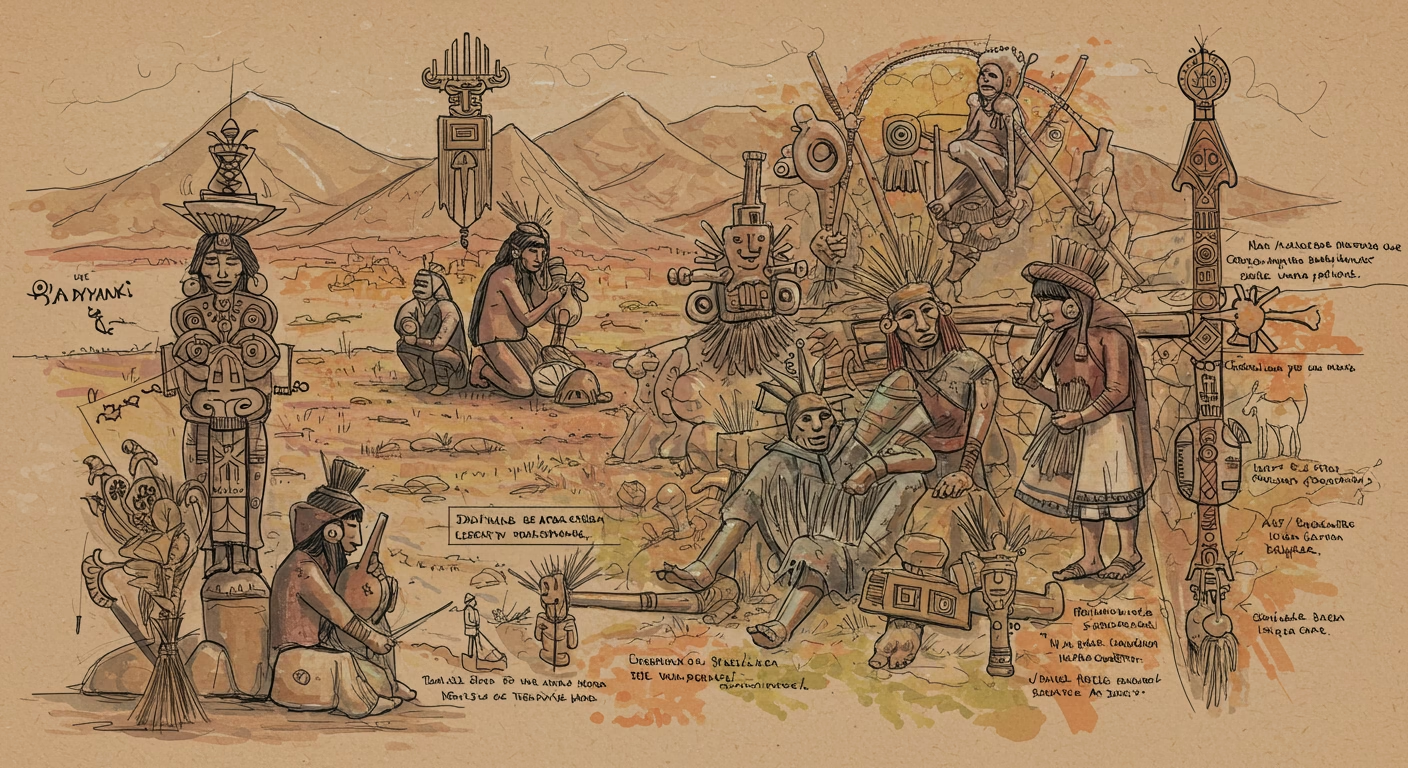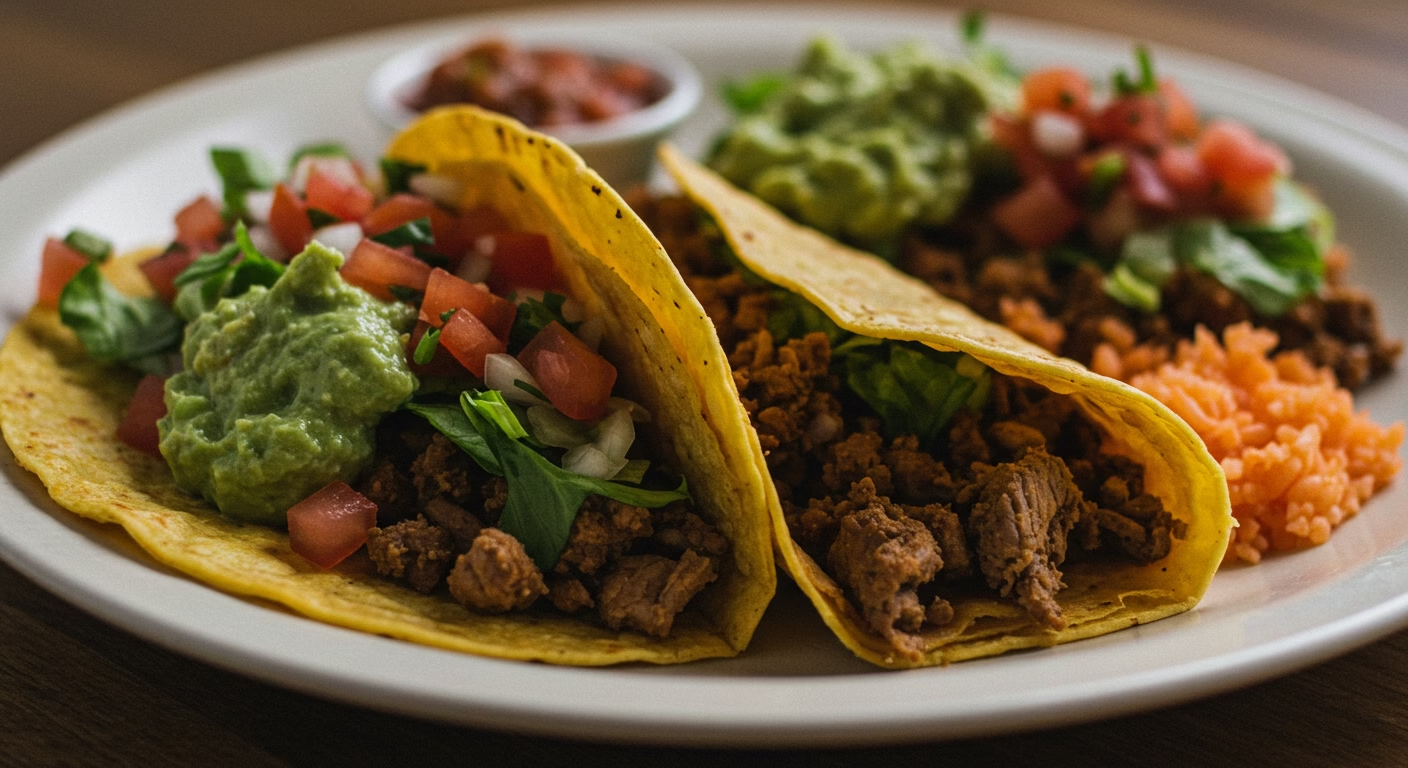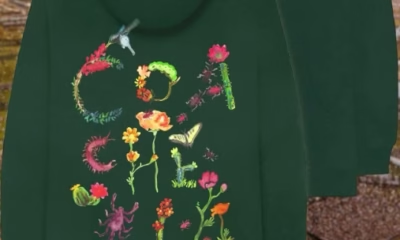BLOG
Exploring Career Opportunities at Hennepin County: A Comprehensive Guide

As Minnesota’s largest county, Hennepin County serves more than 1.3 million residents across 611 square miles, delivering essential public services in health, human services, public safety, infrastructure, and more. With such a wide-ranging mission, the county offers abundant career paths in government administration, healthcare, IT, law enforcement, and other critical fields.
This thriving public sector employer provides not only permanent positions but also internships, temporary roles, and specialized programs tailored to different groups. Job seekers can explore openings in areas ranging from social services to transportation engineering, with competitive salaries and strong benefits. Additionally, Hennepin County prioritizes workforce development through initiatives like youth internships, veteran hiring programs, and reentry opportunities for justice-involved individuals.
Beyond traditional job postings, the county hosts career fairs, partners with local organizations like CareerForce, and offers volunteer positions that can lead to paid employment. Whether you’re a recent graduate, career changer, or seasoned professional, Hennepin County presents meaningful ways to build a rewarding career while serving the community.
1. Overview of Hennepin County Jobs
As one of Minnesota’s largest employers, Hennepin County offers thousands of permanent and temporary positions across diverse fields. Employees enjoy competitive compensation, comprehensive benefits, and strong opportunities for career advancement. Whether in healthcare, public safety, administration, or technology, the county provides meaningful work with excellent work-life balance and professional development programs. With a commitment to workforce diversity and community service, Hennepin County represents an ideal environment for building a rewarding public sector career. The county’s workforce is organized into seven key areas:
- County Administration – Oversees policy implementation and county leadership.
- Disparity Reduction – Focuses on equity initiatives and eliminating systemic disparities.
- Health and Human Services – Includes healthcare, social services, and assistance programs.
- Law, Safety & Justice – Encompasses public safety, corrections, and legal services.
- Operations – Provides administrative and logistical support.
- Public Works – Manages transportation, environmental protection, and infrastructure.
- Resident Services – Supports libraries, elections, property records, and community engagement 3.
Key Job Categories
Hennepin County offers roles in:
- Business operations
- Community engagement
- Data analytics
- Health care
- Information Technology
- Legal services
- Public safety
- Transportation and engineering 3.
Job seekers can explore openings on the Hennepin County Jobs Portal or sign up for job alerts to stay updated on new postings 13.
2. Internships and Early Career Programs
Internships
The county offers diverse internships across various departments, including public health, IT, law enforcement, and social services. These paid positions provide hands-on experience, professional development, and networking opportunities for students and recent graduates seeking public sector careers, including:
- Hennepin County Library (HCL) Internships – Available in fall, winter/spring, and summer terms, requiring a minimum of 120 hours over 12–14 weeks. Most positions require current college enrollment 5.
- Law Clerk Program – Offered by the Hennepin County Attorney’s Office, this competitive program provides hands-on legal experience for law students. Applications are accepted year-round 8.
- STEP-UP Program – A summer jobs initiative for Minneapolis youth aged 14–21, offering paid internships at top employers, including county offices 8.
Internships do not guarantee future employment but provide valuable experience and networking opportunities.
Volunteer Opportunities
For those looking to gain experience before applying for paid roles, Hennepin County offers volunteer positions in:
- Libraries (e.g., tech help tutors)
- Environmental and gardening programs
- Community corrections and veteran support programs 15.
3. Career Fairs and Job Search Resources
Hennepin County hosts career fairs and provides job search assistance through:
Upcoming Events
- April 23, 2025 (In-Person Career Fair) – Held at the Brooklyn Park Library from 10 a.m. to noon. Registration is required 7.
- Virtual Job Fairs – Previous events included a March 26 virtual fair, with new dates announced periodically 7.
CareerForce Support
Job seekers can access:
- Free resume assistance
- Labor market insights
- Career planning tools
- Apprenticeship opportunities in high-growth fields like IT, healthcare, and manufacturing 7.
CareerForce locations in Bloomington, Brooklyn Park, and Minneapolis North offer in-person support 7.
4. Specialized Employment Programs
For Veterans
Hennepin County prioritizes veterans in hiring and offers:
- Veterans Employment Center – Helps transition military personnel into civilian jobs.
- Veterans Treatment Court Mentors – Volunteer roles supporting veterans in the justice system 710.
For Youth and At-Risk Individuals
- YouthBuild Program – Provides construction training for youth aged 16–24.
- Job Corps – Free career training, housing, and education for low-income youth.
- SOAR Program – Offers education grants for young adults with legal system involvement 7.
For Individuals with Criminal Records
- Step Ahead – Assists job seekers with felony convictions in finding employment.
- AccessAbility Inc. – Supports reentry with housing, legal aid, and job training 7.
5. Benefits of Working at Hennepin County
Employees enjoy:
- Competitive salaries and pension plans
- Comprehensive health insurance
- Flexible work schedules (including shift options for public safety roles)
- Professional development and training programs
- Employee referral bonuses 1310.
Testimonials from employees highlight the county’s supportive culture and meaningful community impact 3.
Conclusion
Hennepin County provides a dynamic and inclusive work environment, offering numerous opportunities for career growth across various sectors. First, job seekers can explore direct employment in fields such as public safety, healthcare, IT, and administration. Additionally, the county offers internships for students and recent graduates, allowing them to gain hands-on experience in government operations. For example, programs like the STEP-UP initiative connect Minneapolis youth with paid internships, while law clerk positions provide legal training.
Moreover, Hennepin County supports specialized employment programs tailored to different groups. Specifically, veterans benefit from hiring preferences and mentorship opportunities through the Veterans Employment Center. Similarly, at-risk youth and individuals with criminal records can access job training and reentry support via initiatives like YouthBuild and Step Ahead.
Furthermore, job seekers can enhance their search by attending career fairs, both in-person and virtual, where they can network with hiring managers. In addition, resources like CareerForce offer free resume assistance, labor market insights, and apprenticeship opportunities. As a result, applicants are better equipped to secure rewarding positions in public service.
Finally, working at Hennepin County comes with competitive benefits, including health insurance, flexible schedules, and professional development programs. Therefore, whether through internships, specialized training, or direct employment, the county provides pathways for individuals to build meaningful careers. In conclusion, by leveraging these resources, job seekers can find roles that align with their skills and passions while contributing to the community.
For more details, visit:
This guide provides a snapshot of the vast opportunities available—explore further to find your ideal role at Hennepin County!
BLOG
Dadiyanki: Timeless Andean Tradition

For centuries, the high-altitude communities of the Andes Mountains have preserved cultural traditions that embody their deepest spiritual beliefs and social values. Among these enduring practices stands Dadiyanki, an ancestral ritual whose name originates from the Quechua language—combining “dadi” (ancestor) and “yanki” (service or offering). This ceremonial tradition represents far more than a historical artifact; it serves as a living bridge between generations, connecting contemporary Andean societies with their pre-Colonial past while continuously adapting to modern realities. As globalization accelerates cultural homogenization, understanding Dadiyanki offers crucial insights into indigenous resilience, communal identity, and humanity’s universal need for connection with its roots and natural world.
Unveiling the Origins and Historical Journey
Dadiyanki’s exact origins remain shrouded in the mists of Andean history, but anthropological evidence suggests the practice dates back over a millennium, with roots in pre-Incan civilizations. Archaeological findings indicate early forms emerged among indigenous groups inhabiting the harsh yet spiritually rich landscapes of the Altiplano. Unlike many cultural practices that vanished under colonial pressure, Dadiyanki demonstrated remarkable cultural resilience, surviving Spanish suppression during the 16th century by retreating into remote highland areas where it continued clandestinely 2. This historical trajectory reveals a pattern of resistance through cultural preservation—a quiet but persistent affirmation of indigenous identity against external domination.
The tradition evolved significantly across centuries, transforming from simple functional observances tied to agricultural survival into elaborate artistic expressions laden with spiritual symbolism. Colonial-era integration of Catholic elements exemplifies this adaptive quality, though the ritual’s core focus on ancestral veneration remained intact. Post-colonial periods saw Dadiyanki emerge from secrecy, gradually reclaiming its public role in community life while maintaining its foundational principles. This evolutionary journey—from hidden practice to celebrated heritage—reflects the broader story of Andean cultural survival against overwhelming odds 25.
The Ceremonial Tapestry: Components and Symbolism
At its heart, Dadiyanki represents a complex ceremonial system honoring ancestors and harmonizing human activity with agricultural and cosmic cycles. Preparation itself is a communal undertaking spanning weeks or months, involving sacred site selection, material gathering, role assignments, and spiritual purification through fasting. This preparatory phase reinforces community bonds, establishing the ritual’s foundation in collective effort rather than individual performance 2.
The ceremony unfolds through four interconnected components, each carrying profound symbolic weight:
-
Invocations: A shaman or elder initiates the ritual by calling upon ancestral spirits, establishing a sacred space where the living and dead commune. This invocation acknowledges the ongoing presence of ancestors in daily life, rejecting Western binaries between the spiritual and material worlds 2.
-
Offerings: Participants present meticulously prepared items including traditional foods like quinoa and potatoes, handcrafted objects, coca leaves, and chicha (fermented corn beverage). These offerings symbolize reciprocity—the fundamental Andean principle of ayni (mutual care)—between humans, ancestors, and nature 2.
-
Dance and Music: Specific rhythmic patterns and movements facilitate communication with the spirit world while embodying agricultural cycles. Traditional instruments like the quena (flute) and charango (small string instrument) create sonic landscapes believed to please ancestral spirits and ensure their blessings 25.
-
Communal Feast: The ceremony culminates in a shared meal where food and drink become tangible expressions of unity between participants and their ancestors. This feast embodies the Andean value of mink’a (collective work for community benefit), reinforcing social cohesion through shared sustenance 2.
Table: Key Ceremonial Components of Dadiyanki
| Ceremonial Element | Form | Symbolic Meaning | Community Role |
|---|---|---|---|
| Invocations | Chants by shaman/elder | Calling ancestral presence | Spiritual connection |
| Offerings | Food, crafts, coca leaves | Reciprocity with spirits | Material expression of respect |
| Dance/Music | Traditional rhythms/movements | Cosmic harmony | Communal participation |
| Feast | Shared traditional foods | Unity of living/dead | Social bonding |
Cultural Significance and Regional Expressions
Dadiyanki transcends ritual performance, functioning as a multifaceted cultural engine that sustains Andean worldviews and social structures. Its primary significance manifests in four interconnected dimensions:
-
Ancestral Continuity: Dadiyanki reinforces the Andean belief that ancestors remain active participants in community well-being, offering guidance and protection. This challenges Western notions of linear time and disconnected generations, presenting time as a cyclical continuum where past, present, and future constantly interact 2.
-
Agricultural Prosperity: Deeply intertwined with planting and harvest cycles, Dadiyanki ceremonies petition ancestral spirits for fertile land, adequate rain, and bountiful harvests. This connection underscores the sacred relationship between humans and Pachamama (Mother Earth) that underpins Andean cosmology 2.
-
Community Cohesion: The ritual’s collaborative nature—from preparation through execution—strengthens social bonds across generations and families. By working collectively toward spiritual goals, participants reinforce shared identity and mutual responsibility that extends beyond ceremonial contexts into daily communal life 25.
-
Intergenerational Knowledge Transfer: Elders transmit oral histories, agricultural techniques, craft skills, and spiritual understanding to younger participants during ceremonial preparation. This transforms Dadiyanki into a living classroom where cultural knowledge persists despite formal education’s erosion of traditional wisdom 2.
These core elements manifest differently across the Andean region, reflecting local adaptations to diverse environments and cultural influences:
In Bolivia’s Altiplano, Dadiyanki incorporates strong elements of Aymara spirituality, particularly veneration of Pachamama, alongside Catholic saints—a syncretism reflecting centuries of cultural negotiation. Peruvian variations emphasize musical diversity, incorporating distinctive instruments like the quena and charango into ceremonial performances. Meanwhile, Ecuadorian communities often synchronize Dadiyanki with the Inti Raymi festival, blending ancestral reverence with celebrations honoring the sun god and harvest season 2.
Modern Challenges and Preservation Innovations
Despite its resilience, Dadiyanki faces unprecedented challenges in the 21st century. Rapid urbanization draws younger generations away from rural homelands, weakening their connection to traditional practices. Cultural erosion accelerates as global media and educational systems prioritize Western knowledge over indigenous wisdom. Government policies promoting national unity sometimes inadvertently marginalize regional traditions, while economic pressures transform sacred artifacts into commercial commodities divorced from spiritual meaning 25.
These threats have sparked innovative preservation initiatives:
-
Documentation Projects: Anthropologists collaborate with communities to record ceremonies through film, audio, and written ethnography, creating archives accessible to future generations and global audiences. These projects increasingly prioritize indigenous perspectives, ensuring cultural integrity in representation 2.
-
Educational Programs: Community-led workshops teach children ritual significance, traditional music, ceremonial food preparation, and Quechua terminology, countering formal education’s marginalization of indigenous knowledge 2.
-
Cultural Tourism: Some communities integrate Dadiyanki into eco-tourism and ethno-tourism initiatives, allowing respectful visitors to witness ceremonies. This generates economic benefits while raising global awareness, though it risks transforming sacred rituals into performances 2.
-
Legal Recognition Campaigns: Advocates lobby governments and UNESCO to designate Dadiyanki as intangible cultural heritage, providing legal protection against exploitation and resources for preservation 2.
The growing global interest in indigenous wisdom presents both opportunities and ethical dilemmas. While international attention brings resources and validation, it also risks cultural appropriation—where external actors commercialize or misrepresent sacred elements without community consent or benefit. Within communities, debates continue between traditionalists advocating strict adherence to ancestral forms and innovators supporting adaptive evolution to maintain relevance 25.
Culinary and Artistic Expressions Beyond Ritual
Dadiyanki’s significance extends beyond ceremonial contexts into daily life, particularly through culinary traditions and artistic creativity. Fermented foods and beverages prepared for ceremonies, especially variations of traditional chicha, offer notable health benefits including probiotics (supporting gut health), essential vitamins (B12, K2), and enhanced nutrient absorption. These preparations showcase indigenous knowledge of functional nutrition—long before modern science recognized the microbiome’s importance 5.
In contemporary arts, Dadiyanki inspires multimedia creativity:
-
Visual Arts: Artists incorporate traditional motifs into paintings, textiles, and sculptures, blending ancestral symbols with modern aesthetics. These works often explore themes of identity, memory, and cultural continuity, serving as tangible connections between past and present artistic traditions 5.
-
Musical Innovation: Musicians fuse Dadiyanki rhythms with genres like folk, jazz, and electronic music. Groups incorporate ceremonial instruments into contemporary compositions, while lyrics address modern indigenous experiences through traditional poetic forms. This musical evolution demonstrates the tradition’s dynamic adaptability while expanding its audience beyond Andean communities 5.
-
Culinary Innovation: Chefs creatively integrate traditional ceremonial ingredients into modern gastronomy, developing dishes like quinoa-chia bowls with amaranth, purple potato gnocchi with indigenous herbs, and chicha-based cocktails. These innovations introduce global audiences to Andean flavors while providing economic opportunities for local producers 5.
The Future Path: Balancing Tradition and Innovation
As Dadiyanki moves deeper into the 21st century, its continuity hinges on navigating several intersecting paths:
-
Cultural Revitalization Movements: Growing indigenous pride, particularly among urban youth, fuels renewed interest in ancestral practices. Young professionals increasingly return to communities to document elders’ knowledge, suggesting potential for intergenerational renewal of ceremonial practices 2.
-
Technological Integration: Digital platforms enable virtual ceremonies connecting diaspora communities, while apps teach Quechua ritual terminology. Social media campaigns raise awareness globally, though they require careful management to prevent distortion of sacred elements 2.
-
Environmental Sustainability: Concerns about sourcing ceremonial materials (like rare plants or minerals) prompt discussions about sustainable harvesting and ethical alternatives. Some communities develop ecological restoration projects tied to ritual sites, aligning spiritual practice with environmental protection 5.
-
Cross-Cultural Collaborations: Respectful partnerships with international artists, musicians, and chefs generate innovative expressions while sharing Andean culture globally. Successful collaborations ensure indigenous communities retain creative control and receive fair benefits from shared projects 5.
Table: Regional Variations of Dadiyanki Practice
| Region | Distinctive Features | Cultural Influences | Ceremonial Timing |
|---|---|---|---|
| Bolivian Altiplano | Pachamama veneration | Strong Aymara elements | Tied to lunar cycles |
| Peruvian Andes | Quena/charango music | Pre-Incan traditions | Agricultural milestones |
| Ecuadorian Highlands | Inti Raymi integration | Inca sun worship | June solstice period |
Conclusion: The Unbroken Thread
Dadiyanki endures as a testament to the cultural resilience of Andean peoples across centuries of upheaval. More than a static relic, it represents a dynamic tradition continuously reinterpreted while maintaining its core purpose: honoring ancestors, nurturing community, and harmonizing human existence with natural and spiritual realms. In a globalized world facing environmental crises and social fragmentation, Dadiyanki offers profound wisdom about reciprocal relationships—between generations, communities, and humanity’s place within the natural order.
The future of Dadiyanki depends not on fossilized preservation but on the mindful balance between maintaining essential meanings and embracing thoughtful innovation. As younger generations reinterpret rituals through contemporary lenses and global audiences discover Andean wisdom, this ancient practice demonstrates remarkable adaptive vitality. By respecting indigenous agency in directing Dadiyanki’s evolution, the world can celebrate not just the survival but the flourishing of cultural diversity—recognizing that traditions like Dadiyanki hold essential keys to humanity’s collective heritage and future wisdom. As one Quechua elder noted during a Dadiyanki invocation: “We stand where ancestors meet descendants, remembering that today’s innovations become tomorrow’s traditions.”
BLOG
EJ Tackett Net Worth: A Deep Dive into the Bowling Champion’s Earnings and Career

EJ Tackett stands among bowling’s elite, dominating the PBA Tour with multiple titles and major championships. His impressive career, fuelled by tournament wins and lucrative sponsorships, has amassed an estimated net worth of $2–4 million. Key victories like the 2023 PBA Players Championship and 2024 Tournament of Champions earned six-figure payouts, while partnerships with Storm Bowling and other brands boost his income. Compared to legends like Belmonte and Williams, Tackett’s financial success continues rising as he competes at his peak. His journey exemplifies how skill and smart career moves translate to prosperity in professional bowling.
Early Life and Career Beginnings
Born on December 28, 1992, in Huntington, Indiana, EJ Tackett showed an early passion for bowling. He began competing in youth leagues and quickly rose through the ranks, demonstrating exceptional talent. His amateur success paved the way for his professional career, and he joined the PBA Tour in 2013.
Tackett’s rookie season was nothing short of spectacular. He won his first PBA title at the 2013 PBA Cheetah Championship, becoming one of the youngest players to achieve such a feat. This victory marked the beginning of a highly successful career that would see him become one of the sport’s top earners.
Career Achievements and Major Wins
EJ Tackett’s career is decorated with numerous titles and accolades, making him one of the most dominant bowlers in modern PBA history. Some of his most notable achievements include:
- Multiple PBA Tour Titles: As of 2024, Tackett has won over 15 PBA Tour titles, including several major championships.
- Major Championships:
- 2016 PBA World Championship (his first major win)
- 2023 PBA Players Championship
- 2023 PBA Tour Finals
- 2024 PBA Tournament of Champions
- PBA Player of the Year (2023): Recognised as the best bowler of the year after an outstanding season.
- Multiple 300 Games: Known for his precision, Tackett has bowled multiple perfect games in professional competition.
These victories have not only solidified his reputation as an elite bowler but have also significantly boosted his earnings through prize money and endorsements.
EJ Tackett’s Net Worth in 2024
As of 2024, EJ Tackett’s estimated net worth is between 2 million and 4 million. This figure is derived from his tournament winnings, sponsorships, and other business ventures.
Breakdown of Income Sources
1. PBA Tour Earnings
Tackett has earned over 1.5 million∗∗ in prize money throughout his career. His biggest paydays have come from major tournaments, where winners can take home ∗∗1.5 million∗∗ in prize money throughout his career. or more. For example:
- 2023 PBA Players Championship: $100,000
- 2024 PBA Tournament of Champions: $100,000+
- Multiple standard PBA titles: 20,000−50,000 per win
2. Sponsorships and Endorsements
Like many professional athletes, Tackett earns a significant portion of his income through sponsorships. Some of his major sponsors include:
- Storm Bowling: One of the leading bowling ball manufacturers, Storm has been a long-time sponsor.
- VISE Grips: A company specialising in bowling accessories.
- Bowling.com: An online retailer that partners with top bowlers.
- Other apparel and equipment deals
These endorsements likely contribute hundreds of thousands of dollars annually to his net worth.
3. Exhibition Matches and Appearances
Tackett participates in high-profile exhibition matches, corporate events, and bowling clinics, which add to his income. These appearances can command 5,000−20,000 per event, depending on the scale.
4. Social Media and Brand Collaborations
With a growing following on platforms like Instagram and YouTube, Tackett monetises his online presence through brand promotions and content partnerships.
5. Investments and Business Ventures
While not much is publicly known about his investments, many professional athletes diversify their income through real estate, stocks, or bowling-related businesses.
Comparison to Other Top PBA Bowlers
EJ Tackett is among the highest-earning bowlers in the PBA. Here’s how his net worth compares to other top players:
- Jason Belmonte: Estimated net worth of $5 million+ (highest-earning bowler)
- Pete Weber: Estimated net worth of $3 million (legendary bowler)
- Walter Ray Williams Jr.: Estimated net worth of $4 million (all-time PBA titles leader)
While Tackett hasn’t yet reached the financial heights of Belmonte or Williams, his career is still in its prime, and his net worth is expected to grow.
Lifestyle and Spending Habits
Unlike some high-profile athletes, Tackett maintains a relatively low-key lifestyle. He resides in Bluffton, Indiana, and focuses on his career rather than extravagant spending. However, he does invest in:
- High-performance bowling equipment (custom balls, shoes, and accessories)
- Travel and training expenses (competing globally requires significant investment)
- Charitable contributions (he supports youth bowling programs)
Future Earnings Potential
At 31 years old, EJ Tackett is still in his competitive prime. With several more years of high-level bowling ahead, his net worth could rise significantly. Factors that could increase his earnings include:
- Winning more major championships
- Securing bigger endorsement deals
- Expanding his media presence (YouTube, podcasts, etc.)
- Potential broadcasting opportunities post-retirement
Conclusion
EJ Tackett’s net worth, estimated between 2 million and 4 million, reflects his status as one of bowling’s elite athletes. Thanks to his relentless dedication, he has risen to the top of the Professional Bowlers Association (PBA) Tour. Currently, his wealth stems from multiple income streams, including tournament winnings, sponsorships, and endorsements.
Moreover, sponsorships significantly boost his earnings. As a result of his success, brands like Storm Bowling, VISE Grips, and Bowling.com partner with him, likely adding hundreds of thousands annually. Beyond that, Tackett earns from exhibition matches, public appearances, and social media promotions.
In comparison to other top bowlers, Tackett’s net worth is impressive but still growing. While legends like Jason Belmonte (5M+) and Walter Ray WalterRayWilliamsJr.( higher totals, Tackett’s career is still in its prime. Therefore, his financial standing is expected to climb as he wins more titles and secures bigger deals.
Ultimately, Tackett’s journey proves that skill, perseverance, and smart financial choices lead to success. For aspiring bowlers, his story is a blueprint for turning passion into prosperity. As he continues to dominate, his net worth—and legacy—will only rise.
Would you like any additional details on his career or financial strategies?
BLOG
Exploring Halal Mexican Food Near Me: A Flavorful Fusion

Mexican cuisine is beloved worldwide for its bold flavors, vibrant spices, and diverse textures. From sizzling fajitas to cheesy quesadillas, Mexican food offers something for everyone. But for Muslim diners, finding Halal Mexican food can sometimes be a challenge. Fortunately, many restaurants and food trucks now cater to Halal dietary requirements, ensuring that everyone can enjoy authentic Mexican flavors without compromising their faith.
In this article, we’ll explore:
-
What makes Mexican food Halal
-
Popular Halal Mexican dishes to try
-
How to find the best food
-
Top cities with Halal Mexican restaurants
-
Tips for cooking Halal Mexican food at home
Whether you’re craving tacos, burritos, or nachos, this guide will help you discover delicious Halal Mexican options in your area.
What Makes Mexican Food Halal?
For Mexican food to be considered Halal, it must adhere to Islamic dietary laws. This means:
-
Meat must be from a Halal-certified source – Beef, chicken, and lamb should be slaughtered according to Islamic guidelines.
-
No pork or pork by-products – Traditional Mexican dishes often use pork (like carnitas or chorizo), so Halal versions substitute beef, chicken, or plant-based proteins.
-
Alcohol-free cooking – Some Mexican sauces and marinades contain alcohol, so Halal versions avoid these ingredients.
-
Cross-contamination prevention – Restaurants must ensure that Halal meat is not cooked on the same grill as non-Halal items.
Many Mexican restaurants now offer Halal-certified meat or clearly label their Halal options, making it easier for Muslim customers to enjoy their meals with confidence.
Popular Halal Mexican Dishes to Try
If you’re new to Halal Mexican cuisine, here are some must-try dishes:
1. Halal Tacos
-
Carne Asada Tacos – Grilled Halal beef with onions, cilantro, and lime.
-
Chicken Tinga Tacos – Shredded chicken in a smoky chipotle sauce.
-
Vegetarian Tacos – Filled with beans, grilled veggies, and avocado.
2. Halal Burritos & Quesadillas
-
Beef Barbacoa Burrito – Slow-cooked Halal beef wrapped in a flour tortilla with rice, beans, and cheese.
-
Chicken Quesadilla – Melted cheese and grilled chicken between crispy tortillas.
3. Halal Nachos
-
Loaded with Halal ground beef, cheese, jalapeños, and sour cream.
4. Halal Mexican Bowls
-
Burrito Bowl – Rice, black beans, grilled chicken, salsa, and guacamole.
-
Fajita Bowl – Sizzling peppers, onions, and steak over cilantro-lime rice.
5. Halal Enchiladas & Tamales
-
Chicken Enchiladas – Rolled tortillas stuffed with chicken and smothered in red or green sauce.
-
Beef Tamales – Steamed masa dough filled with spiced Halal beef.
How to Find Halal Mexican Food Near Me
Searching for “Halal Mexican food near me”? Here are some ways to locate the best spots:
1. Google & Restaurant Apps
-
Search “Halal Mexican restaurant near me” on Google Maps or Yelp.
-
Check reviews to confirm Halal authenticity.
2. Social Media & Food Blogs
-
Instagram and TikTok often feature foodies reviewing Halal Mexican spots.
-
Follow hashtags like #HalalMexicanFood or #HalalTacos.
3. Halal Certification Websites
-
Websites like Zabihah.com list Halal-certified restaurants, including Mexican eateries.
4. Ask Local Muslim Communities
-
Mosques or Islamic centers often have recommendations for Halal restaurants.
Top Cities for Halal Mexican Food
While this food is growing in popularity, some cities have more options than others:
1. Los Angeles, California
-
Home to many Halal food trucks serving Mexican fusion.
-
Try “Halal Tacos LA” or “Mexican Halal Grill.”
2. New York City, New York
-
Famous for “The Halal Guys” (who also serve Mexican-inspired dishes).
-
Check out “Villa Halal Tacos” in Brooklyn.
3. Houston, Texas
-
A hub for Tex-Mex cuisine with several Halal options.
-
Visit “Al Aseel Grill” for Halal Mexican flavors.
4. Chicago, Illinois
-
“Cairo Kabab” offers Halal Mexican-Kebab fusion.
5. Toronto, Canada
-
“Burrito Boyz” has Halal-certified Mexican options.
Tips for Cooking Halal Mexican Food at Home
If you can’t find a Halal Mexican restaurant nearby, try making it yourself!
1. Use Halal Meat
-
Buy Halal-certified chicken, beef, or lamb from local butchers or online stores.
2. Substitute Pork with Beef or Chicken
-
Replace chorizo with Halal beef sausage.
-
Use chicken instead of pork in carnitas.
3. Make Homemade Salsas & Sauces
-
Avoid store-bought sauces with alcohol; make fresh pico de gallo or guacamole.
4. Try Vegan Mexican Recipes
-
Black bean tacos, veggie fajitas, and avocado enchiladas are naturally Halal.
Conclusion
Craving bold, flavorful Mexican cuisine that aligns with Halal dietary guidelines? You’re in luck! Finding Halal Mexican food near me has become more accessible than ever, with an increasing number of restaurants and food trucks catering to Muslim diners. Whether you’re searching for sizzling fajitas, cheesy quesadillas, or loaded nachos, there are plenty of Halal Mexican food near me options to satisfy your taste buds.
Thanks to rising demand, many eateries now offer Halal-certified beef, chicken, and lamb in traditional Mexican dishes. Instead of pork-based carnitas or chorizo, you can enjoy savory substitutes like grilled Halal beef tacos or spicy chicken burritos. A quick search for “Halal Mexican food near me” on Google Maps or Zabihah.com can help you locate the best spots in your area.
So next time you’re craving authentic flavors, remember—delicious Halal Mexican food near me is just around the corner. Whether you explore local restaurants or whip up a homemade feast, you can enjoy the best of Mexican cuisine while staying true to your dietary values. Don’t wait—search for Halal Mexican food near me today and treat yourself to a fiesta of flavors!
Next time you crave tacos or burritos, search for a Halal Mexican spot near you—or try making your own!
Final Thoughts
-
Always verify Halal certification before dining.
-
Support local Halal Mexican businesses to encourage more options.
-
Experiment with homemade recipes for a personalized touch.
Happy eating!
-

 BLOG2 months ago
BLOG2 months ago“Teenthailand_11_SC1: Unveiling Thailand’s Youth Culture”
-

 EDUCATION1 month ago
EDUCATION1 month agoJollyJerk.com: The Curious Case of an Internet Alias and Its Cultural Significance
-

 EDUCATION1 month ago
EDUCATION1 month agoQawerdehidom: Origins, Principles, and Modern Applications
-

 BLOG2 months ago
BLOG2 months agoTheapknews.shop Health: Your Gateway to Wellness and Tech
-

 ENTERTAINMENT2 months ago
ENTERTAINMENT2 months agoWhat Are Coachella Co-Chairs: The Visionaries Behind the Iconic Festival
-

 BLOG2 months ago
BLOG2 months agoPO18: A Comprehensive Guide to Its Meaning and Applications
-

 BLOG4 weeks ago
BLOG4 weeks agoSmall Warehouse for Rent: A Comprehensive Guide
-

 ENTERTAINMENT3 months ago
ENTERTAINMENT3 months agoGame On: The Best PC Games to Play Right Now
